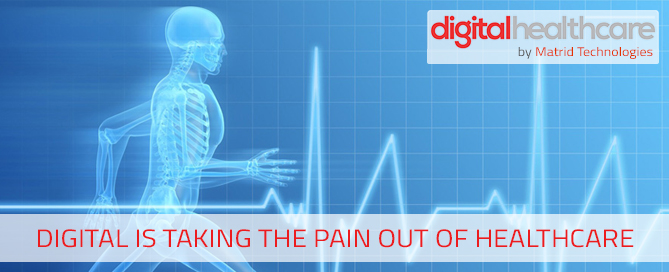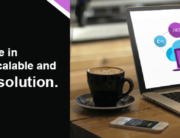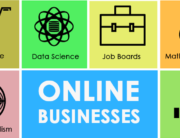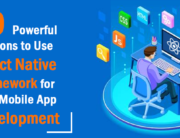Digital products, channels and processes are now part of many healthcare institutions worldwide. Many such institutions have enabled new operating models based on advanced analytics. This is partly due to the fact that patients are now comfortable with the use of digital networks and services.
A number of payers and providers are also benefiting from the advantages of adopting a digital strategy. They are gaining from an understanding of the digital preferences of patients regarding the various channels and services.
Digital helps increase the effectiveness of therapeutic processes and procedures, promotes behaviour that impacts health positively and helps to make established healthcare processes more efficient.
Digital’s impact on the three patient treatment phases
Transformation of patient care is taking place on account of the unprecedented cost efficiencies that digital innovations are offering. Each stage of the patient lifecycle has been revolutionized on account of the integration of digital solutions for healthcare.
1. Pre-treatment
Greater cost efficiency in screening even for difficult to reach populations – Around the world, adequate healthcare access is restricted because of a number of factors, including long waiting times, less than adequate infrastructure, poor physician-to-patient ratio and disease prevention and screening programs that have gone off-target.
Digital devices make screening possible even for difficult to reach populations, besides helping to reduce screening costs and to minimize error. Such devices improve communication between doctors as well as between primary, secondary or tertiary healthcare centers.
Diagnostics through remote self-assessment – Optimum delivery of healthcare services is often compromised due to the long gap between symptom presentation, physical examination, testing in labs and analysis.
Digital solutions let patients remotely assess their own condition and call for medical support when required. Mobile technologies enable real time communication between patients and doctors and lead to instant counselling.
Greater access to health data through electronic records – Healthcare professionals around the world are still dealing with less information and knowledge transfer than required. Lack of awareness of advances in medicine, lack of critical information access and lack of platforms for integration of clinical and molecular data across hospitals are among the related issues.
Electronic records for each patient make data more accessible. These enable constant loops for feedback among healthcare professionals, patients and medical experts. The entire healthcare ecosystem is being transformed through digital connectivity in this manner.
2. Treatment
Better treatment selection with the help of digital – Treatment is selected on the basis of the medical information available. Optimum decisions often depend on sharing of physician experience, referrals, expert evaluations and case sharing.
Digital provides doctors with access to cross-specialty knowledge and helps keep them up to date with medical practice developments. This leads to more accurate treatment selection.
Greater therapy adherence on account of modern technology – Many of those suffering from chronic diseases don’t follow the treatment as advised by their doctors. Some don’t follow timings for medication, others don’t take the correct doses and yet others adjust medication themselves. This may result from forgetfulness, misconceptions or inadequate education in healthcare.
Digital systems track adherence to therapy through the monitoring of fundamental behaviours like sleep and important physiological parameters. This enables interventions to ensure proper adherence to treatment.
Digital makes consistent monitoring easier – Clinic visits and hospital admissions can often lead to unnecessary costs. Conversely, inadequate monitoring and inadequate control of accurate treatment can adversely affect treatment plans and risk patients’ lives.
Healthcare professionals can assess the performance of and the response to treatment through consistent monitoring based on digital technologies. Such monitoring helps to improve the quality of life of patients and to reduce hospital-related costs. It thus provides patients with more independence in managing their own care.
3. Post-treatment
Simplification of continuous care – The collection and communication of health indicators is very significant for this stage of the patient lifecycle. This has traditionally been based on the patients regularly visiting their doctors, which can cause inconvenience because of the travel involved, besides time and expense.
Mobile and the cloud are among the digital technologies that have led to electronic healthcare and medical facility automation. Continuous care is facilitated through the incorporation of analytics capabilities.
Mobile apps’ impact on healthcare
Respiratory rate, posture, skin temperature, physical activity and heart rate are among the parameters patients can track on their own through mobile apps. This can help prevent illness and also in treatment after diagnosis. Healthcare delivery can thus be re-imagined on the basis of mobile apps.
Doctors can also use mobile apps to track symptoms and vital statistics, besides viewing x-rays through them, among other uses. Google Play and Apple’s App Store both have a significant number of apps on offer for doctors.
Wearables help health insurers, doctors and patients
Health insurers use data from wearables to calculate plan costs and prepare risk profiles. The costs of claims and the number of claims are both reduced as wearables lead to reduction in the number of hospital visits and improved treatment outcomes.
Doctors capture and analyze real time data to make better diagnoses. Greater efficiency and multitasking during surgical procedures is made possible through hands-free exchange of information using wearables. Such devices allow doctors to access training assistance anytime and anywhere.
Patients benefit from better treatment and early diagnosis on account of continuous monitoring of data through wearables, in addition to precautionary action against serious conditions. Home diagnostics for chronic diseases leads to better management of care.
Digital devices such as ingestible sensors are having tremendous impact
Ingestible sensors are taken in the form of pills by patients. These comprise edible ingredients and are activated on ingestion.
The sensors interact with disposable patches worn by the patients on their bodies. The patches capture and transmit vital data to data servers, from where doctors access the data.
These sensors reduce the need for blood tests, x-rays and biopsies and are especially useful for patients with chronic diseases.
Apple’s ResearchKit and HealthKit
Apple offers ResearchKit as open source software. iOS App developers can use this to build apps that help Clinical Trial Participants use their phones to submit information. Further, Doctors can easily access this information in real time for their research.
The Health app that Apple offers makes health and fitness data accessible to users through an easy to read dashboard. HealthKit allows patients to choose which data is to be shared among which of the health-related apps they use. Many healthcare establishments have incorporated HealthKit in their services.
Dental implants and body-part replicas through 3D printing
Replicas of jaws and teeth and some finished dental implants are created through 3D printing.
Additionally, customized replacements for knee and hip joints created through 3D printing are being tested.
3D-printed personalized replicas of body parts affected by cancer are enabling doctors to target cancer with more precision.
How Matrid Technologies has contributed to digital healthcare
We have developed a unique knowledge-based healthcare management solution for use by the nephrology departments of major hospitals which offer kidney transplant and dialysis. Our solution helps doctors as well as patients to minutely monitor medication, treatment and diet.
Have you thought about how you could re-imagine your healthcare business with agile digital solutions? Contact us now for a free consultation.







Leave A Comment